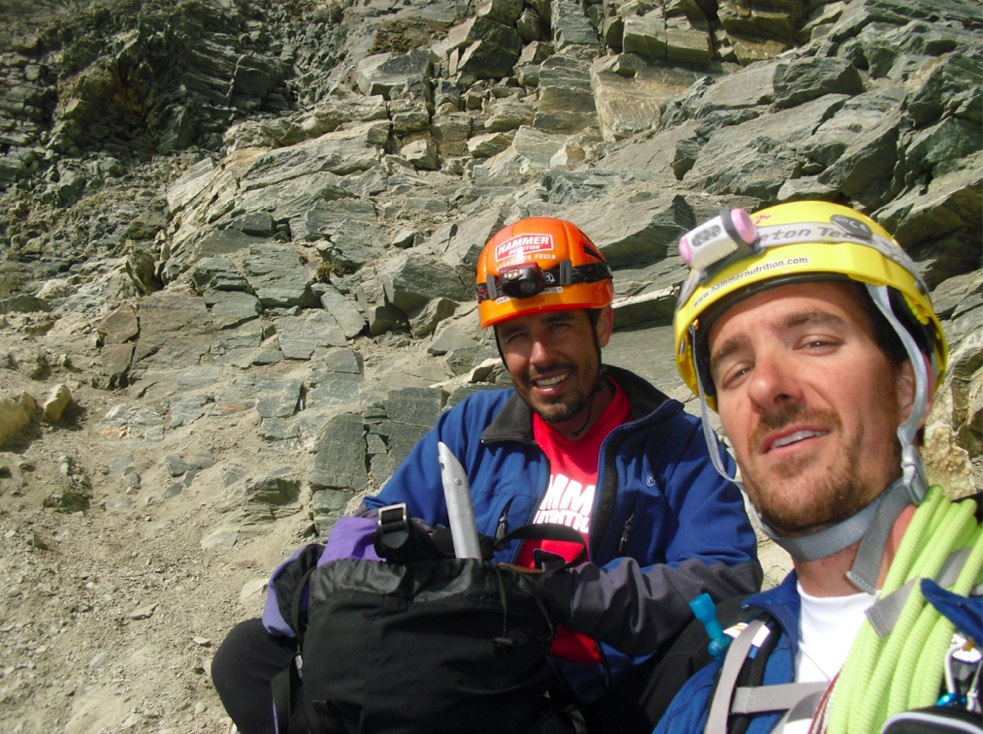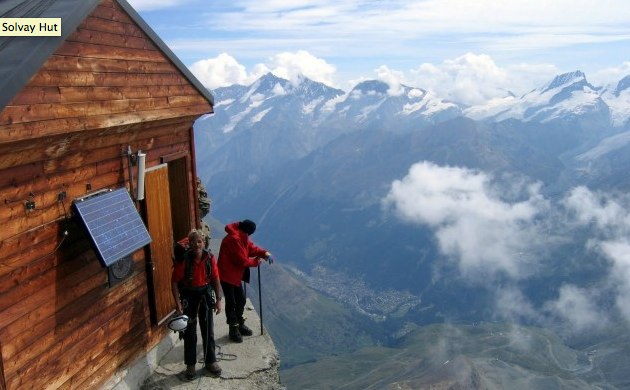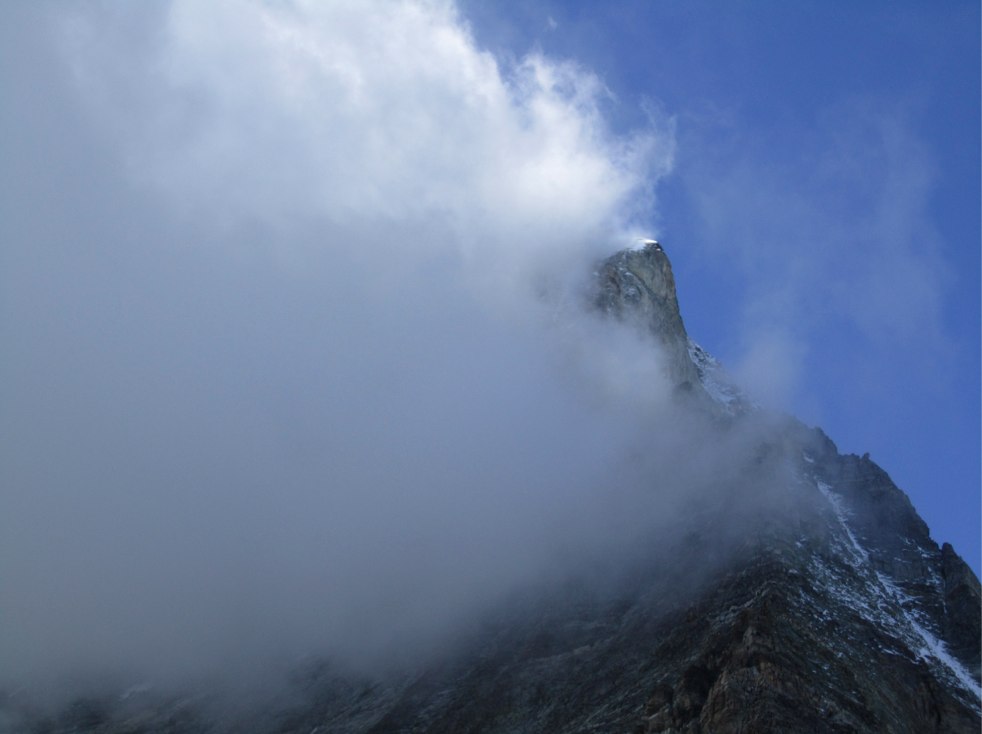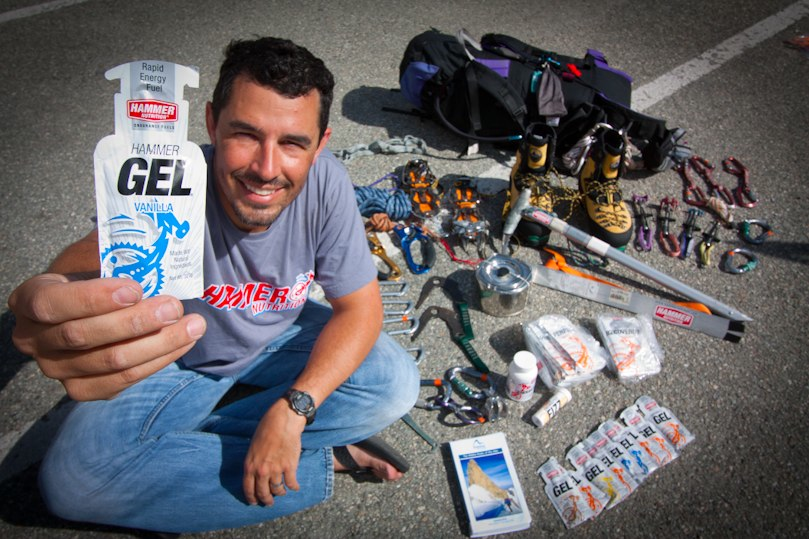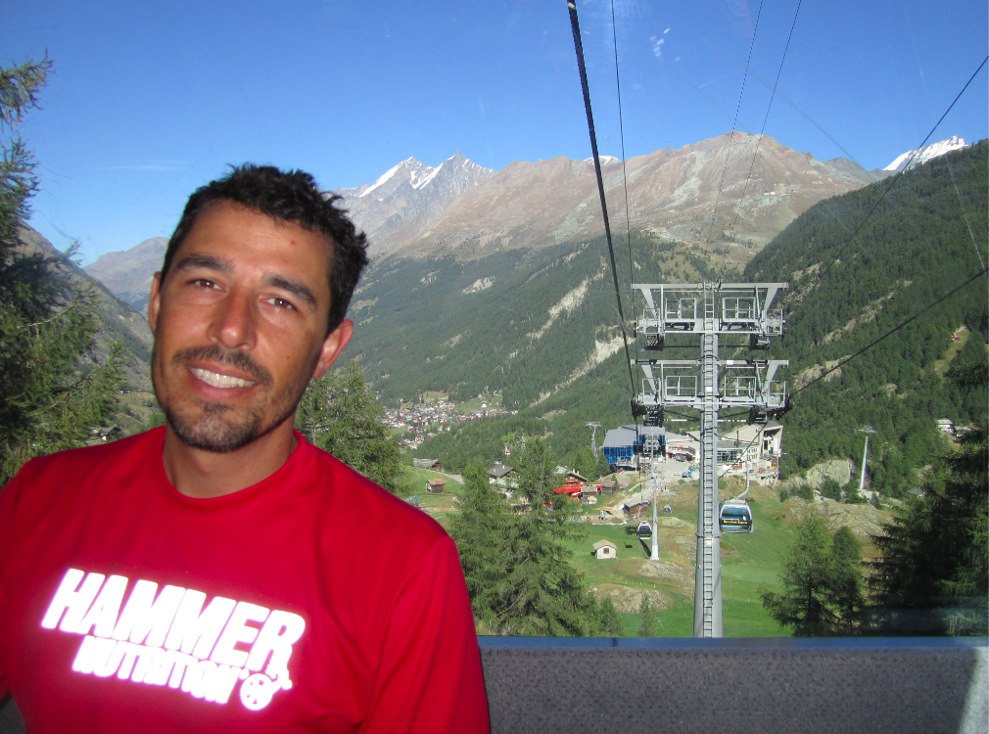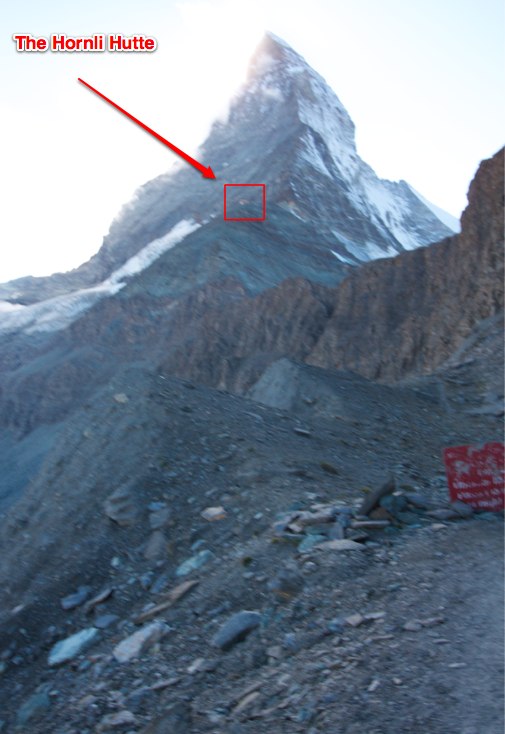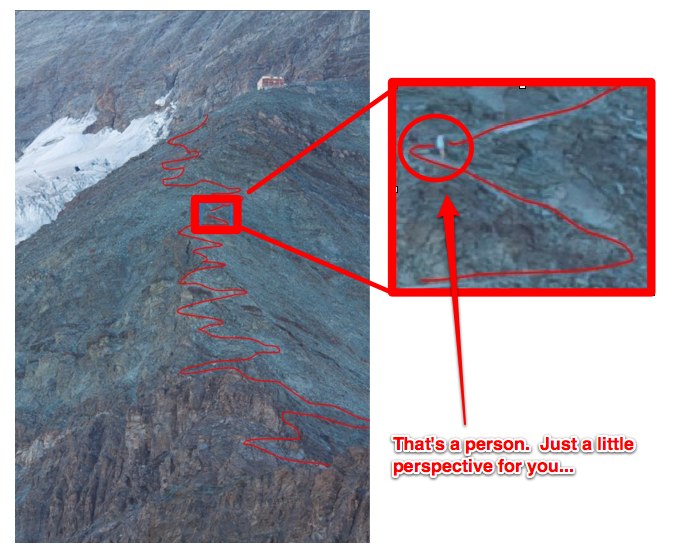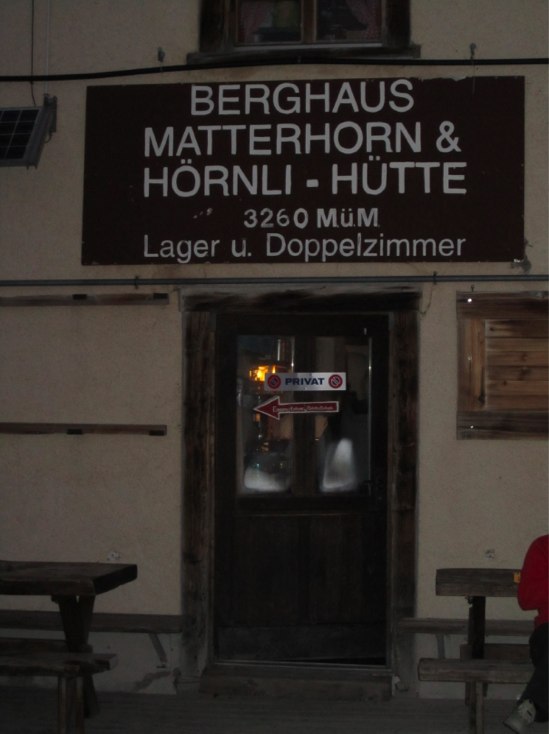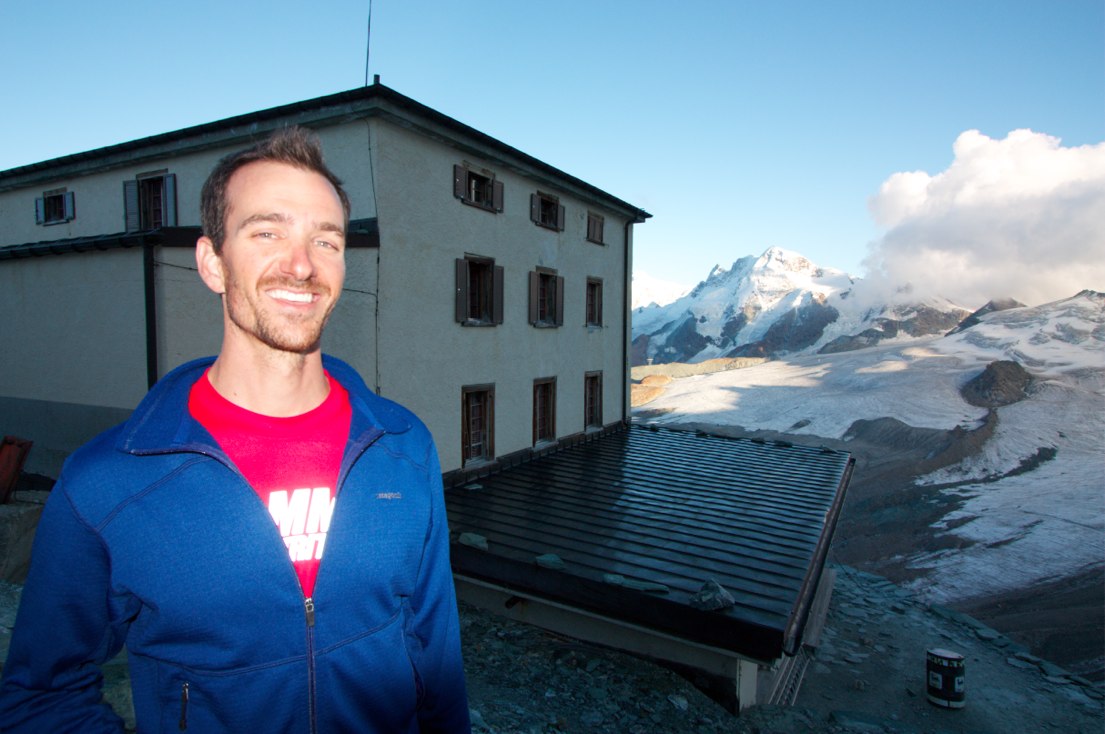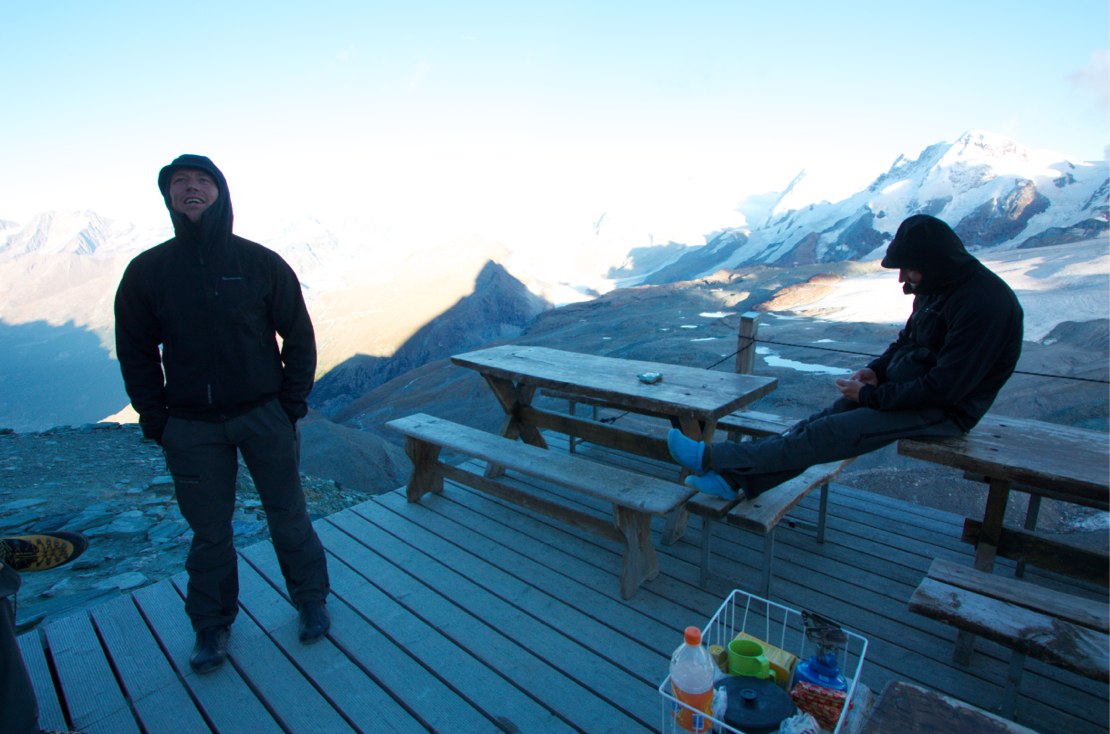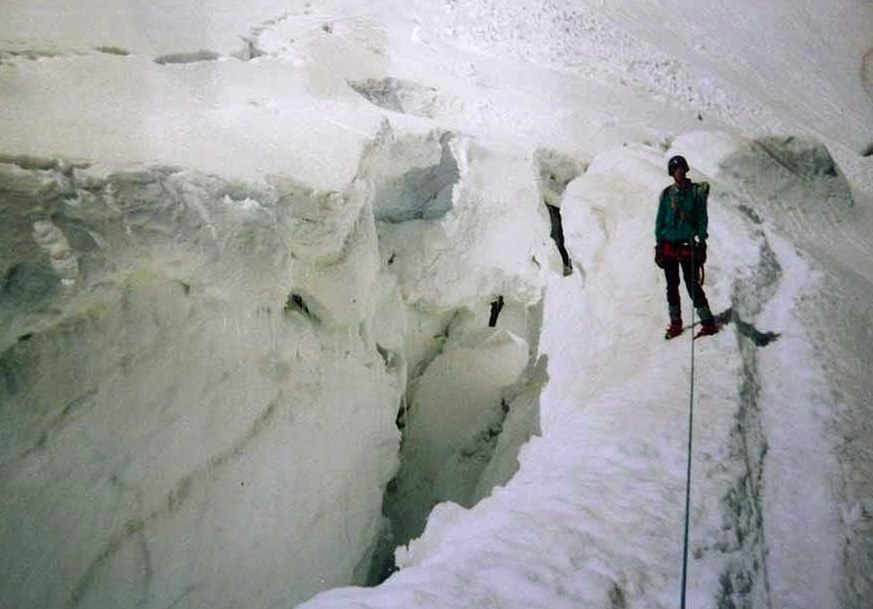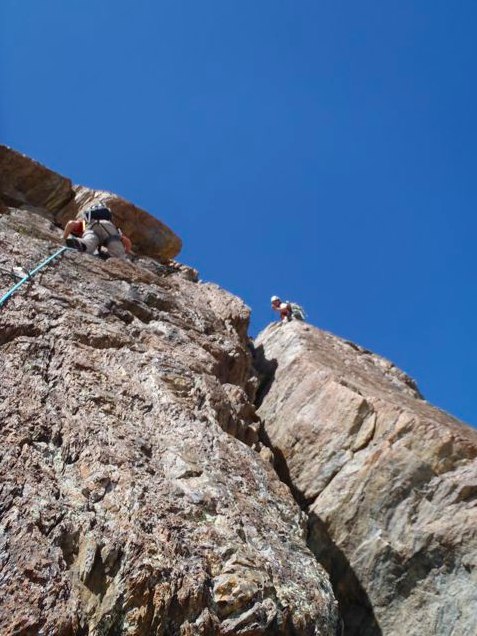After working a few different angles in the scree covered couloir, we found what looked like a secure rock tie onto. We pulled out our xeroxed copy of the route description and read through it yet again. But somehow “look for the yellow-brown rocks next to tower, go L 3 Meters to the chimney and continue up ridge 50 Meters to tower” was not a good enough explanation for us – imagine that.
As we folded up the papers and tucked them away, a loud bang gave me a visceral reaction. Carl and I both immediately looked up the mountain and around us – hoping not to see any movement…
We had been hearing that sound all week in Chamonix – the sound of rock fall; the sound of a very large boulder slipping out of place and falling down the mountain causing a rock avalanche to be released. When you’re tied at half way up a couloir where most rockfall will come blasting down at you obliterating anything in its path, this is NOT the sound you want to hear. Fortunately, in this case we didn’t see any falling rock.
With an hour spent on navigating the scree covered couloir, we looked at the clock; it was 10:45AM. We were 5 hours into the climb at this point and way off schedule. If we were going to be able to make the summit at all, we’d need to know exactly where we were going and start moving quickly. As we discussed our options, a group of German climbers mounted the top of the ridge we were below. We had heard from climbers at the Hornli Hutte that they got stuck at the top of the mountain the day before and had to stay in the emergency Refuge 75% of the way up the mountain – the Solvay Hut.
The Solvay Hut is the last salvation for a climber stuck on the mountain after dark. There’s no heat, no water, no sheets, pillows or blankets. It will get you out of the elements if there’s a storm, but won’t help much beyond that unless you have a sleeping bag and food in your pack to get you through the night. The German climbers didn’t seemed too thrilled to be coming down a day late, and they seemed to be a bit worn from spending an entire night at altitude… but they WERE alive and happy to be able to get off the mountain. We were thankful for their presence as they were able to point us to the route!
Carl and I hustled up the ridge as fast as we could. The climbing grew steeper as we got higher, but we were able to move much quicker now that the hand holds didn’t move and we had a more secure route to move on. In addition, by this point we were becoming accustomed to the exposure the Mattherhorn presents in the way of shear cliffs and our climbing took on more of a smooth bounding and leaping technique. Carl made mention on several occasions that he was blown away by the growth of my climbing skills over the past few weeks, and that it was only because of this growth that we were able to now move quickly on the Matterhorn.
Placing less protection and moving quickly seemed to be the choice approach for Carl others who were making timely progress on the peak. It meant we could move quicker, spend less time in “the danger zones”, and have a chance to rapidly ascend the peak. On the flip side, it meant that Carl could take a 75 foot plunge before there was any chance of the rope stopping him, the same rope I was attached to.
In many cases there simply was no place to fix an anchor and I found myself mounting a ledge to find Carl using a body belay to secure me incase I pulled out a rock or slipped while climbing. It was of very little comfort to know that if I biffed it on a handhold or foot hold and took a plunge, Carl would be joining me for speedy tumble down the east face of the Matterhorn… but it was the way this peak is climbed. Go fast, go light, or go home. As we got to a bend in the ridge, we could see the Solvay Hut clearly. Unfortunately, the ONE valuable piece of information the guidebook DID have to offer: It takes twice as long to get down as it does to ascend – so if you haven’t made it to the Solvay Hut in the first 3 hours, you should turn back. We were now 5 and a half hours in and just approaching the hut.
Many climbers we talked to referenced The Matterhorn as as one of “The Most Difficult Mountains to Navigate”. The guides that worked on the mountain said that you can expect to get lost the first 5-10 times you climb it, and navigating after nightfall is the worst decision you can make. We knew that we could stay in the Solvay hut if we didn’t get down before dark, but we didn’t have any sleeping bags or food to get us through the night so it would be a rough 24 hours for both of us. It seemed like a risky move to continue without a clear route past the hut – but we both wanted to push on.
As we began to move again, we saw a large cloud front moving in on the mountain. This was the nail in the coffin for us. Moving up the mountain without a clear route was difficult, but trying to navigate through a storm at the same time was a different story altogether. Neither Carl nor I were interested in entering into situation with risks that we could not predict or back out of. Making the decision was not hard, but turning around was. We had set a goal for ourselves, and had gone through all the steps necessary to succeed, but the cards were quickly stacking against us. The challenge at this point was finding the route back down. From the start, this was the challenge we were warned of – staying on route coming DOWN was the dangerous part of the mountain.
One of the particularly dangerous parts of the descent was how it was supposed to be executed. On most mountains, you face the rock for most of the descent and climb down and used fix lines, rappels, or walk offs to descend the mountain. While there are several points on the Matterhorn where you do this, the recommended method for 90% of the decent is to face outward and slide or jump down to the rock below while your partner above feeds you out slack on the rope. This can be a faster way to descend but it is definitely a less secure way to travel, especially for the last climber coming down, which in this case was thankfully Carl.
As we made it to the bottom of the ridge we were on (still many hours from our starting point), we stopped for a minute to squeeze some Hammer Gel into our mouths to keep our energy up. This turned out to be fantastic timing as we bumped into a guide and their climber who had made the same decision to turn around. It felt great to have our decision confirmed, but it also gave us a lot of security as the guide knew the mountain well. And as it turned out, the guide actually slept in the bunk next to us when we climbed Mont Blanc. Having a little rapport with this guy was fantastic – and definitely helped the language barrier.
As Carl and I made it back to the Hornli Hutte, and then went on a several hour journey to the lift. Both of us were quite frustrated with the fact that we had to turn back before summiting, especially given our fitness and acclimatization level at this point, the speed at which we were both physically able to move up the peak, and our lack of fatigue due to constant fueling with Hammer Nutrition Products. Ultimately we both knew that it was the right decision to turn back, but it leaves a hole in our hearts as we’ll need to leave Zermatt tonight. The Matterhorn Summit will be looming until we make it back to the Hornli Hutte someday…


